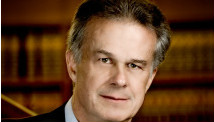STORY HIGHLIGHTS
- Pyrotechnics, overcrowding, poor exits have contributed to tragic fires in recent years
- You would think the world would have learned from past incidents, John Barylick says
- Concertgoers have to be their own fire marshals, he says
Editor's note: John Barylick, author of "Killer Show," a book on the 2003 Station nightclub fire in Rhode Island, is an attorney who represented victims in wrongful death and personal injury cases arising from the fire.
(CNN) -- Sunday morning we awoke to breaking news of another tragic nightclub fire, this time in Brazil. At last report the death toll exceeded 230.
This tragedy is not without precedent. Next month will mark the 10th anniversary of a similar nightclub fire in Rhode Island. At this sad time, it's appropriate to reflect on what we've learned from club fires -- and what we haven't.
Rhode Island's Station nightclub fire of 2003, in which 100 concertgoers lost their lives, began when fireworks set off by Great White, an 80s heavy metal band, ignited flammable packing foam on the club's walls.
Deadly blazes: Nightclub tragedies in recent history

John Barylick
Panicked patrons stampeded toward the club's main exit, and a fatal pileup ensued. Contributing to the tragedy were illegal use of pyrotechnics, overcrowding and a wall covering that would have failed even the most rudimentary flammability tests.
Video images of the Station fire were broadcast worldwide: A concert begins; the crowd's mood changes from merry, to curious, to concerned, to horrified -- in less than a minute. You'd think the world would have learned from it. You would be wrong.
The following year, the Republica Cromanon nightclub in Argentina went up in flames, killing 194 people. The club was made to hold about 1,000 people, but it was estimated that more than 3,000 fans were packed inside the night of the fire, which began when fans began lighting flares that caught the roof on fire.
Echoes of the past: Rhode Island victims 'can't help but watch'
Then, in January 2009, at least 64 New Year's revelers lost their lives in a nightclub in Bangkok, Thailand, after fire ignited its ceiling. Many were crushed in a rush to get out of the club. In December of that same year, a fire in a Russian nightclub, ignited by pyrotechnics, killed 156 people. Overcrowding, poor exits, and indoor fireworks all played roles in these tragedies; yet no one bothered to learn from mistakes of the past.
While responsibility for concert disasters unquestionably lies with venue operators, performers and promoters, ultimately, we, as patrons of clubs and concerts, can enhance our own safety by taking a few simple steps. The National Fire Protection Association urges concertgoers to:
• Be observant. Is the concert venue rundown or well-maintained? Does the staff look well-trained?
• As you proceed to your seat, observe how long the process takes. Could you reverse it in a hurry? Do you pass through pinch points? Is furniture in the way?
• Once seated, take note of the nearest exit. (In an emergency, most people try to exit by the door they entered, which is usually not the closest, and is always overcrowded.) Then, share the location of that nearest exit with your entire party. Agree that at the first sign of trouble, you will all proceed to it without delay.
• Once the show begins, remain vigilant. If you think there's a problem, LEAVE IMMEDIATELY. Do not stay to "get your money's worth" despite concerns about safety. Do not remain to locate that jacket or bag you placed somewhere. No concert is worth your life. Better to read about an incident the next day than be counted as one of its statistics.
Read more: How to protect yourself in a crowd
To be sure, all fire codes must be vigorously enforced, and club and concert hall operators must be held to the highest standards. A first step is banning indoor pyrotechnics in all but the largest, stadium-type venues.
But, ultimately, we are our own best "fire marshals" when it comes to avoiding, and escaping, dangerous situations. We can still enjoy shows. But it is up to us to look out for our own safety.
In coming days, Rhode Islanders will follow the unfolding news from Brazil with a sense of queasy deja vu -- the rising body counts, the victim identification process, the grieving families, and the assigning (and dodging) of blame. If only they had learned from our tragedy.
The opinions expressed in this commentary are solely those of John Barylick.
